
Snow Leopard
Snow Leopard
Snow Leopard
Do you know the snow leopard, a feline with white fur and a thick, long tail? In addition to being bred in zoos, some of you may have seen them because they are sometimes talked about on SNS. The snow leopard is the only cat that is adapted to living in the alpine zone and is a characteristic animal that lives at the highest altitudes. Let's take a peek at what characteristics and secrets snow leopards have in this article!
Snow Leopard Basic Infomation
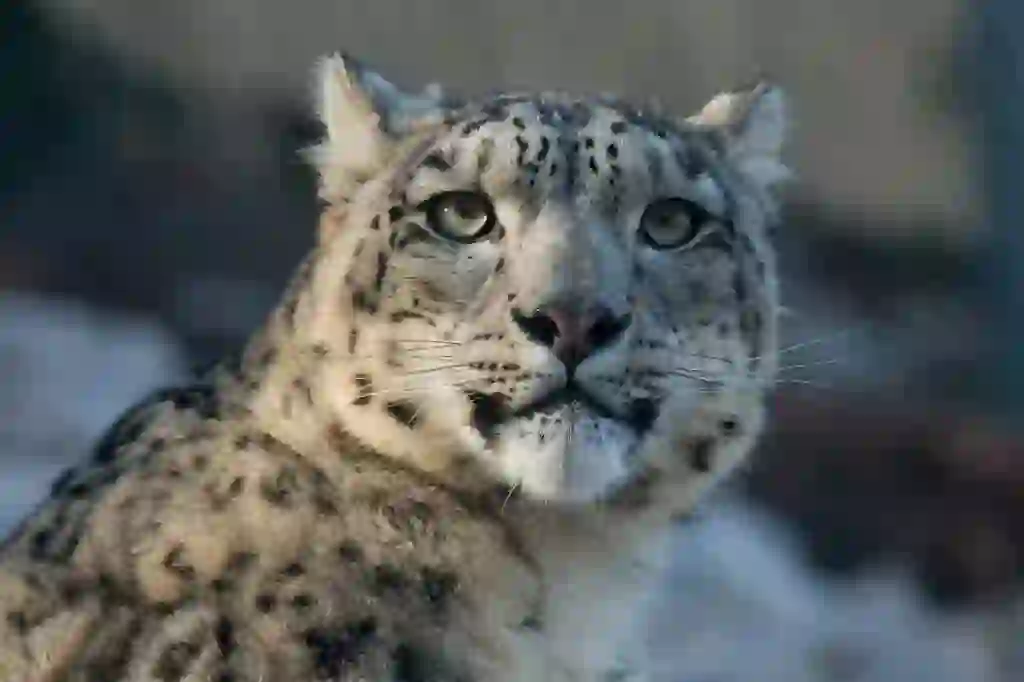
Mammalia-Carnivora-Felidae-Leopard genus.
Length:1~1.5m weight:35~55kg.
The snow leopard is a wild big cat that lives in the snowy and dry high mountains of Central Asia.
The exterior features are that the coat is yellowish brown to grey with black spots all over the body, and it has a very thick and long tail.
Snow leopards are basically nocturnal and often hide in the shadows during the day to rest, but they can also be active during the day in areas where there are few humans.
Snow leopards are basically animals that have their own territory and live alone. Regardless of gender, they reach sexual maturity in the first 2~3 years of life, and males and females act together only when mating.
The breeding season is from October to May, but in the case of Japan zoos, it seems that it is often from December to February. The gestation period is about 90~103 days, and 2~3 babies are born in one birth.
When the female snow leopard is about to give birth, she builds a burrow with her own fur and gives birth to her offspring in it. Newborn snow leopards weigh about 500g and do not have their eyes open, but their eyes open about 7 days after birth and they start eating meat about 40~60 days after birth.
Snow leopard babies live with their mothers at least until the end of their first winter, during which time they learn how to hunt and live in the high mountains.
Snow Leopard Q&A

What is the origin of the name of the snow leopard?
No concrete documents or evidence have been found that show the specific origin of the name snow leopard or when it was called by this name.
It is thought that this name was probably given to it because it is an animal like a leopard that lives in the snow.

Why do snow leopards live there?
Snow leopards inhabit the alpine regions of Central Asia (12 countries in total, including China, Bhutan, Nepal, India, Pakistan, Afghanistan, Russia, and Mongolia).
In summer, they live at an altitude of 2,700~5,800m, but in winter, they chase their prey and move to a forest at an altitude of about 1,800m.
Snow leopards are the only animals of the felidae that live in the alpine zone.
The reason why snow leopards live in the alpine zone, where it is cold and there is little prey, is that it is thought that as a result of losing the competition with leopards, they had to move their place of life to the high mountains, where it is difficult to live.
However, the snow leopard adapted its body while living in the high mountains and succeeded in surviving brilliantly.
By the way, snow leopards, which live in places that are not places where people live or visit, have long been shrouded in mystery.It used to be called a "phantom animal," and it was first photographed in 1970.
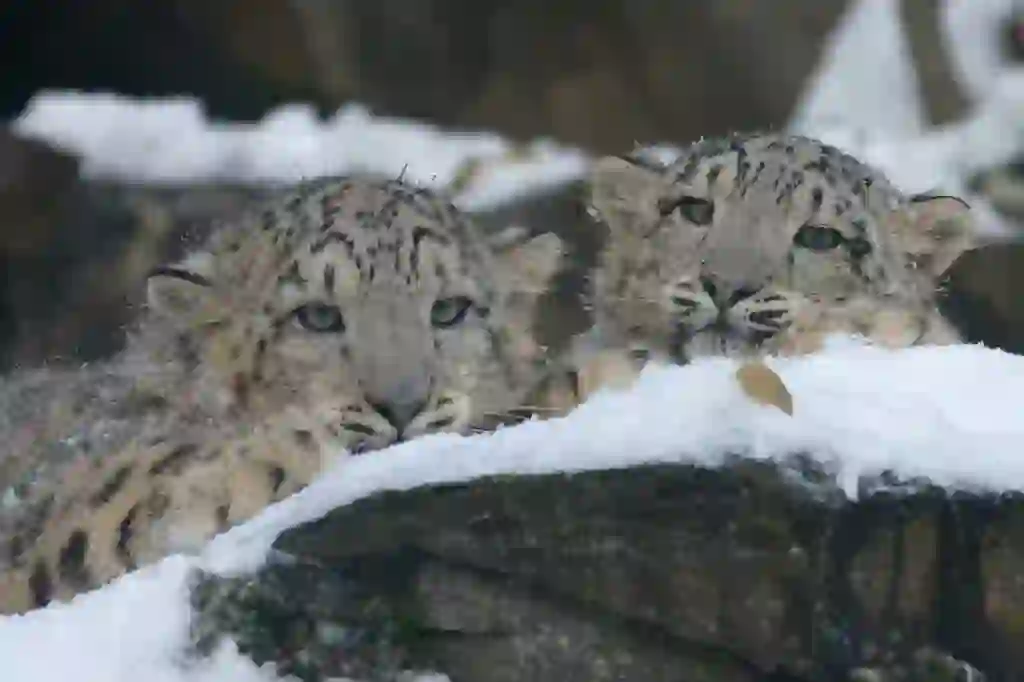
What does the snow leopard eat?
Wild snow leopards catch and eat a variety of animals, including wild goats and sheep (alpine Ibex, markhor, bharal, argali, etc.), wild boars and deer, rodents and hares.
Snow leopards sometimes ambush and catch their prey, but more often they gently approach their prey and jump at once to catch it.
They use their strong hind legs to fly 6~15m at once, sometimes catching animals that are 3 times larger than their own body.
However, the place where snow leopards live is a very difficult environment to live in, with poor footing and deep snow. Therefore, it seems that it is not uncommon to attack livestock because it is easier to catch than wild animals.
By the way, at the zoo, we eat horse meat, chicken, chicken heads, etc.
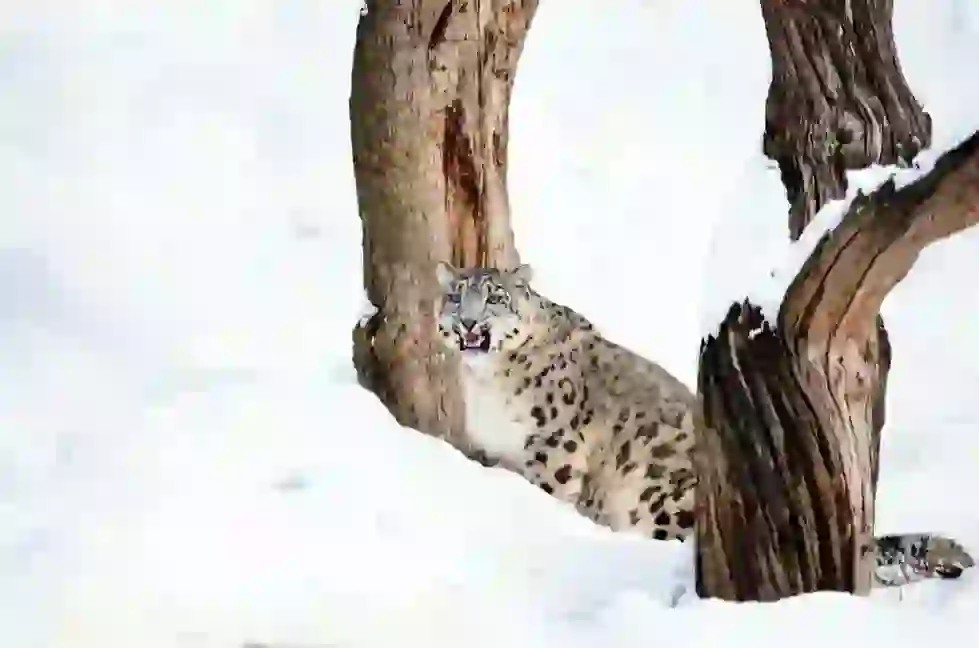
Why is the snow leopard's tail long and thick?
The tail of the snow leopard is particularly long among the large cats, and the length is about 0.9 ~ 1 m, which is about the same as the body length. Also, if you compare it with other felines, you can see that the tail is thick for its body size.
Snow leopards use this characteristic tail "for balance" and "to warm the body".
By extending its tail when jumping and wagging its tail when turning, the snow leopard can balance well on steep slopes and jump to run down.Also, when resting, I sometimes wrap my tail around my legs and nose and use it like a scarf.
By the way, snow leopards kept in zoos sometimes bite their tails.
It is not clear why they bite their tails, but it is thought that they do this to reassure them when they feel some kind of stress.
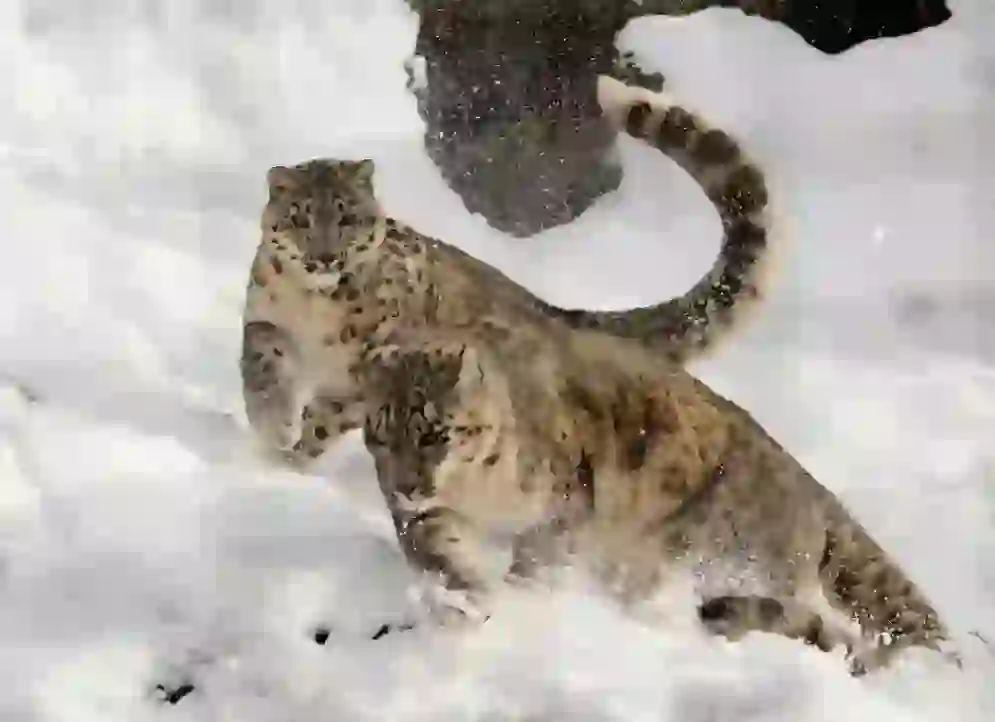
Why is snow leopard fur white?
Large cats are all yellow or yellowish brown in body color, such as leopards, tigers, and cheetahs, but why do snow leopards' fur have a whitish color?
The answer can be found by looking at where snow leopards live.
The places where the snow leopard lives are alpine areas covered with snow and rocks.
Yes, the seemingly flashy white (yellowish brown to gray, more accurately) fur and spotted patterns and tail stripes of the snow leopards resemble the harsh mountain rocks of Central Asia and serve camouflage.
In fact, snow leopards blend well into the background and are difficult to find, so it is said that it is difficult to observe and investigate.
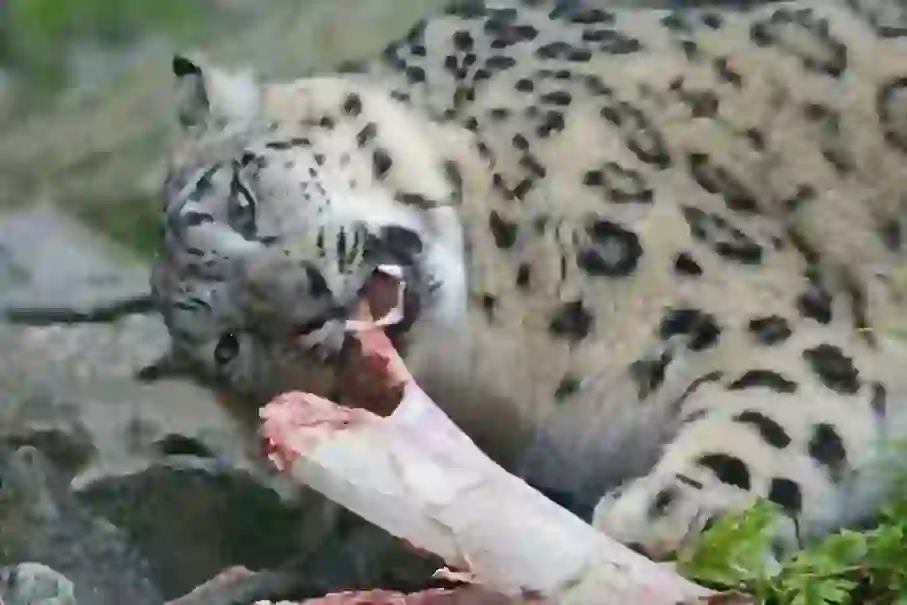
Is it true that the snow leopard's body hides the secret of living in the high mountains?
It's true.
Living at high altitudes, low oxygen and very cold, the snow leopard's body hides many secrets.
The first secret is in the nose.
The snow leopard's nose is thick to let in a lot of air, and the nostrils are enlarged. The nose also has a mechanism to warm cold air, add humidity, and then take it into the body.
In addition, they have a special gene that increases blood vessels in the lungs to make it easier to take in oxygen.
The second secret is in the hairs.
The snow leopard's fur is long and dense, and it is made to withstand the cold of the snowy mountains.Snow leopards are known to have the longest hair among large cats, and the longest hair can reach 12cm.
The third secret is in the legs.
The snow leopard's legs are so large that they don't sink when walking or running on snow.
If you replace it with a human, it may be easier to understand if you think of it as wearing snow boots. In addition, hair grows on the soles of the feet to prevent slipping on snow and rocks.
The fourth secret is in the bones.
The spine of the snow leopard is very supple and soft, and the long hind legs allow it to fly very long distances in one jump.
They can jump up 2m vertically without running and can run at speeds of up to 65 km/h on rocky terrain with poor footing.
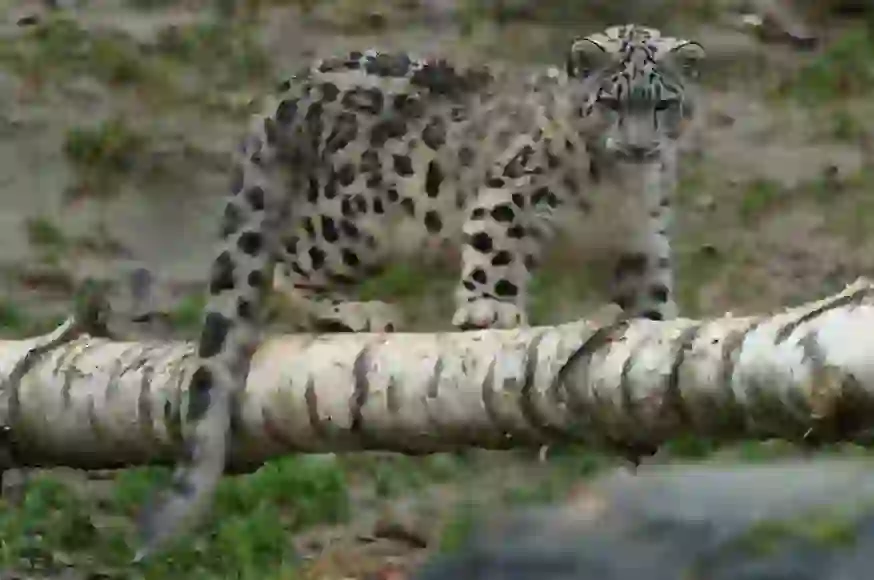
Is it true that snow leopards have cute calls?
It's true.
Snow leopards are large felines, but they cannot bark like tigers and lions. Therefore, even adult snow leopards meow with cute voices such as "mew" and "meow" just like pet cats.
Tigers and lions may bark loudly to appeal to their territory, but snow leopards that cannot speak loudly appeal to their territory with droppings, pee, and claw marks.
Snow leopards are basically animals that live alone, but it has been confirmed that there are several variations of their calls, such as the sound of males and females chirping during the breeding season and the voice of babies calling their mothers.
Therefore, it is thought that snow leopards in the wild use their calls to communicate with their fellows in some way.
By the way, snow leopard babies chirp in a low voice such as "gue" immediately after birth, but when they grow up a little, they call their mother by chirping in a bird-like voice such as "piyo piyo" and "pee".The squealing voice was very cute and became a hot topic on SNS.
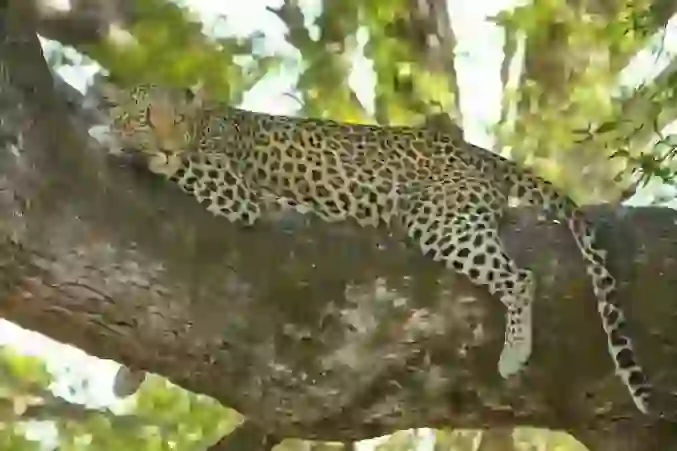
Can snow leopards be kept as pets?
When breeding rare animals at home, it is necessary to follow the established laws in some countries. This time, we will introduce whether it is possible to breed snow leopards in Japan.
Snow leopards are designated as "specified animals" by Japan laws that may endanger human life and property.
Since June 1, 2020, the keeping of specific animals for pet purposes has been completely prohibited, so snow leopards cannot be kept as pets in Japan Japan.
By the way, in the habitat of the snow leopard, there was a case where the kitten was actually a snow leopard when it was picked up, brought back, and raised.
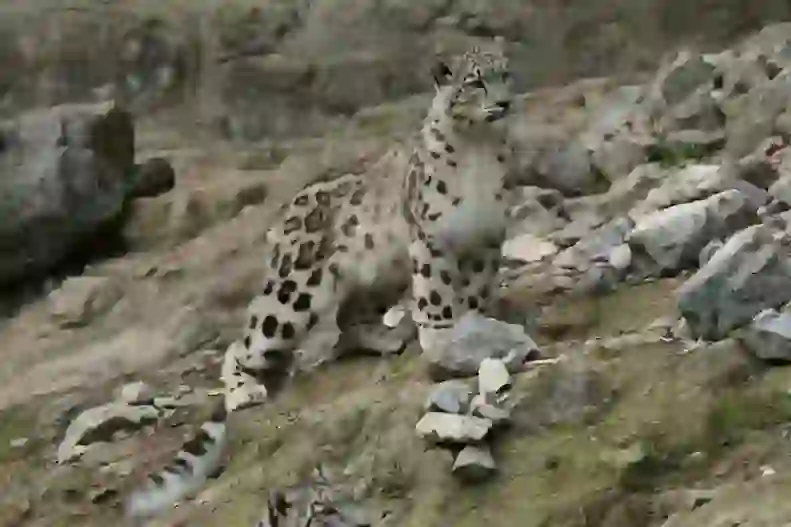
What is the lifespan of a snow leopard?
It is said that the life span of a snow leopard is about 15 years in the wild and about 20 years in captivity.
The world's oldest snow leopard was kept at the Bronx Zoo in the United States and lived to be 22 years old and 5 months old.
The oldest snow leopard Japan was a female "Patra" that was kept at the Higashiyama Zoo and Botanical Garden in Aichi Prefecture until February 2010, and lived to be 21 years and 9 months.
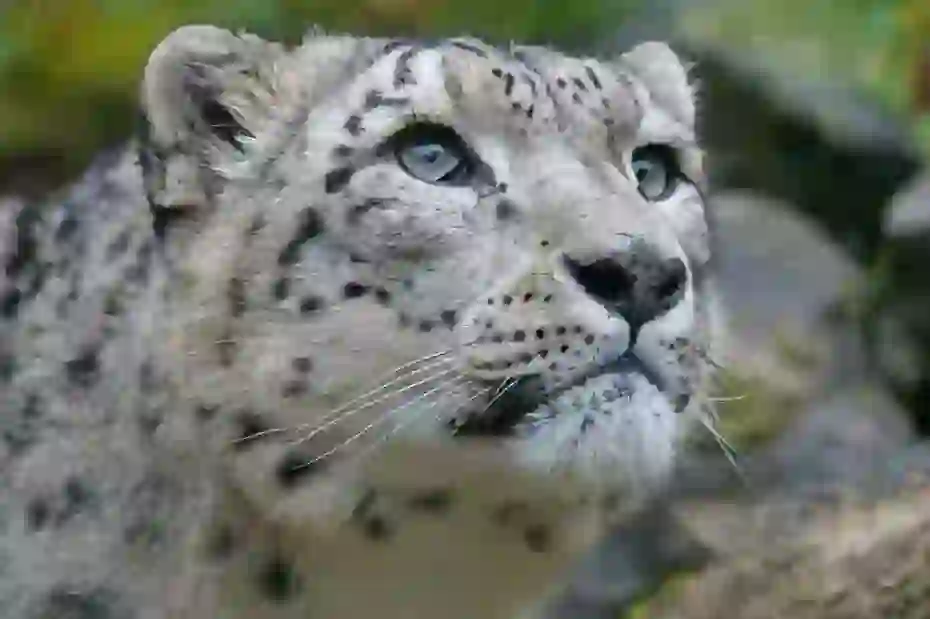
What enemies does a snow leopard have?
In the wild, child snow leopards are often targeted by wolves and birds of prey, but it is said that adult snow leopards have no noticeable natural enemies.
However, for such a snow leopard, there is one and greatest natural enemy. Yes, that's us humans.
Snow leopards have long been feared and hated by locals as animals that attack livestock (goats, sheep, horses, yaks, dogs, etc.).
Currently, the snow leopard is designated as an endangered species and is internationally protected.
However, it is said that up to 450 snow leopards are still killed in one year due to the fact that farmers who killed their livestock were killed in retaliation for their livestock and poached to take the bones used to take fur and traditional medicine.
In addition, it is said that the impact of global warming is affecting the forests and vegetation in the area where snow leopards live.
As a result, there are concerns that the number of animals that are prey for snow leopards and places where snow leopards can live will decrease steadily, making it more likely that conflicts with humans will occur.
The snow leopard's habitat is a harsh environment and is not easily accessible to humans. Therefore, it is difficult to say that it has been sufficiently investigated, but the estimated population of snow leopards is thought to be about 3,500 ~ 7,000.
And if poaching and global warming continue as they are, it is said that wild snow leopards may become extinct before their detailed ecology is known.

Would you like to become a part of the 'Animalbook.jp'?
Turn your knowledge into Q&A and share it with the world. ※Publication will be activated after purchase. Let's share information together!
Snow Leopard Type of List
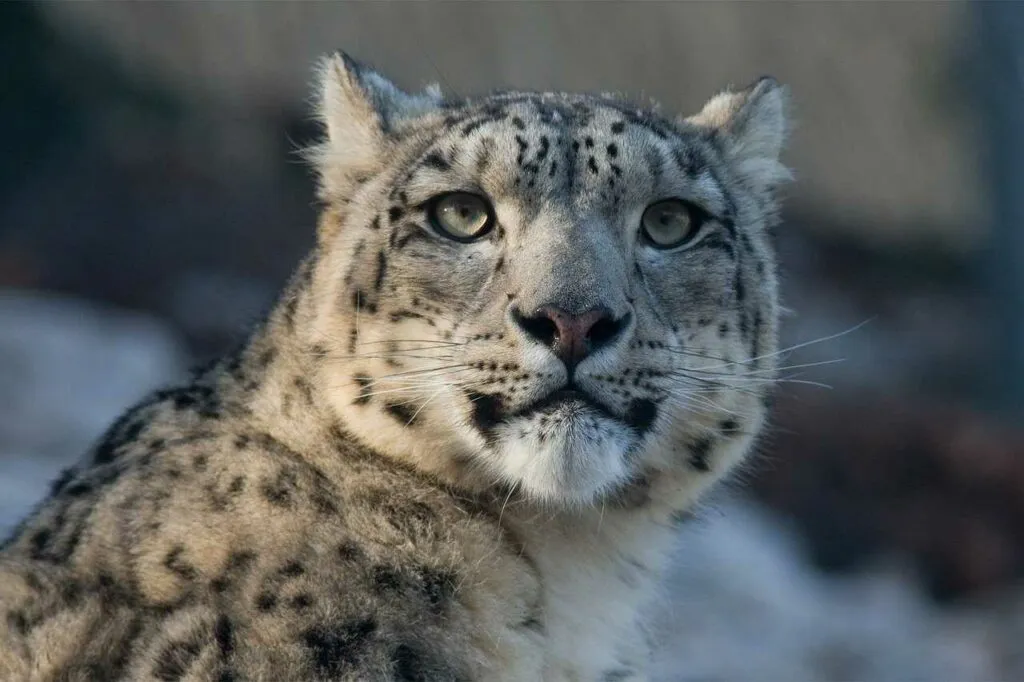
- Snow Leopard
Information
Congratulations! You are the first commenter!

Create Your Favorite List!
Snow Leopard
Save the animals you love! Build your own list to quickly revisit your favorites later.

Would you like to leave a comment?
※Please note: This is for the purchase of rights to post comments within the article.
Find Your Favorites!
Our shop offers a unique and attractive selection of goods themed around various animals.
Snow Leopard References

- 今泉 忠明(2004年)『野生ネコの百科』データハウス
- ピーター・クヴィン「峡谷の村で出会ったユキヒョウ」『ナショナルジオグラフィック』、2020年第26巻第7号、p89-107
- 東山動植物園「ユキヒョウパトラへの献花の御礼」 http://www.higashiyama.city.nagoya.jp/blog/2010/02/post-3171.html
- 東京ズーネット「ユキヒョウの鳴き声コミュニケーション」 https://www.tokyo-zoo.net/topics/profile/profile01.shtml
- 東京ズーネット「“ネコ科の女王”ユキヒョウ来園──多摩 2005/02/04」 https://www.tokyo-zoo.net/topic/topics_detail?kind=news&link_num=2250
- 札幌市円山動物園「ユキヒョウ」 https://www.city.sapporo.jp/zoo/b_f/b_08/db123.html
- 東京都「多摩動物公園 ユキヒョウの「エナ」がカナダへ旅立ちます~希少動物の繁殖を目指して~」 https://www.metro.tokyo.lg.jp/tosei/hodohappyo/press/2015/09/21p9a302.html
- ワイルドライフ「161モンゴル アルタイ山脈 ユキヒョウ親子天空の断崖をゆく」 https://www.nhk.or.jp/wildlife/archive/p161.html
- smartFLASH「アンタッチャブル・柴田が聞く「ネコ科動物」がっかり雑学(1)」 https://smart-flash.jp/lifemoney/10276
Snow Leopard Introduction of media used
出典:https://pixabay.com/videos/id-48741/

出典:https://pixabay.com/images/id-725384/

出典:https://pixabay.com/images/id-1985510/

出典:https://pixabay.com/images/id-725385/

出典:https://pixabay.com/images/id-2053821/

出典:https://pixabay.com/images/id-1982520/

出典:https://pixabay.com/images/id-991771/

出典:https://pixabay.com/images/id-860247/

出典:https://pixabay.com/images/id-518210/

出典:https://pixabay.com/images/id-931224/

出典:https://pixabay.com/images/id-1758248/
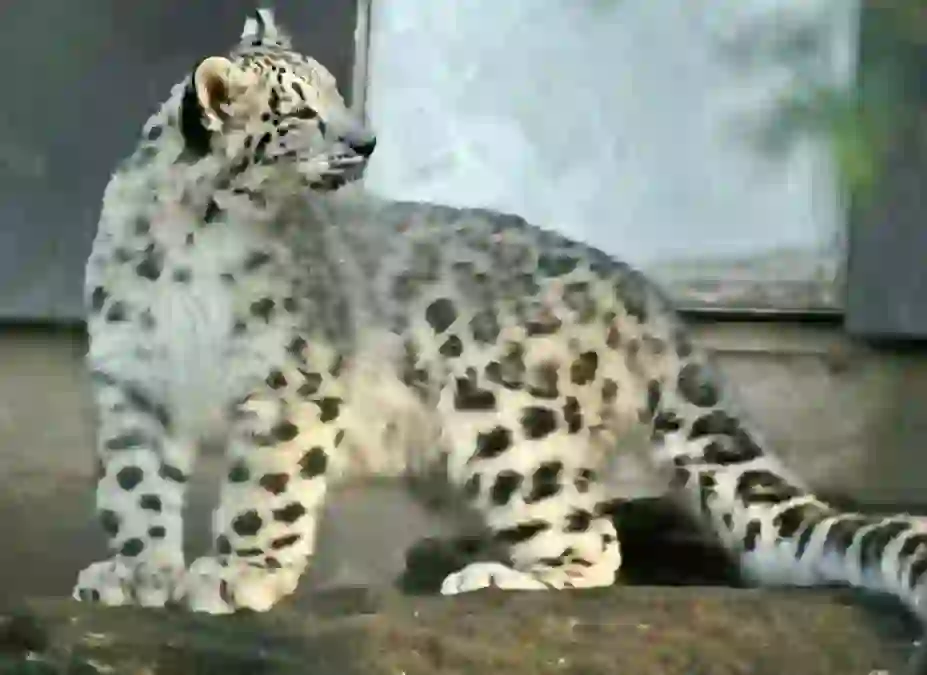
出典:https://pixabay.com/images/id-70012/
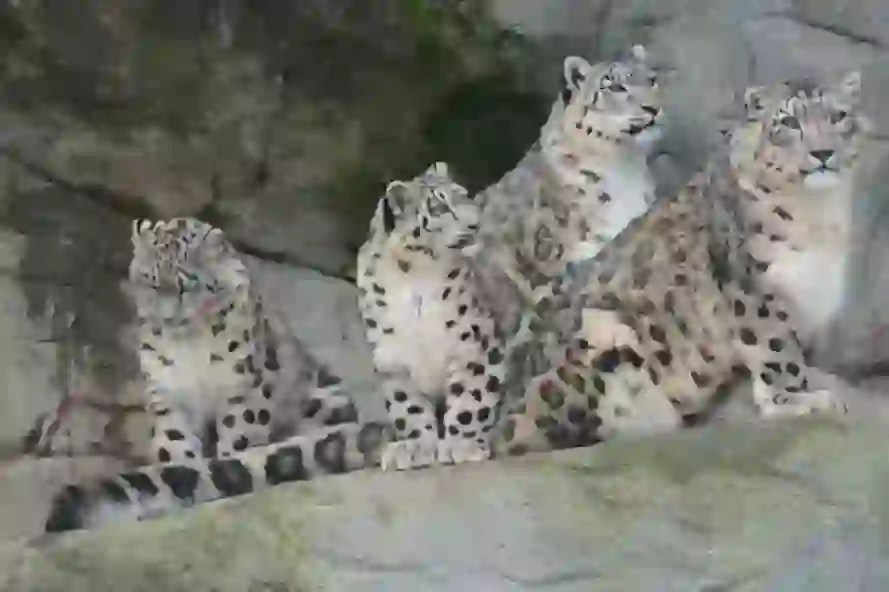
出典:https://pixabay.com/images/id-857437/
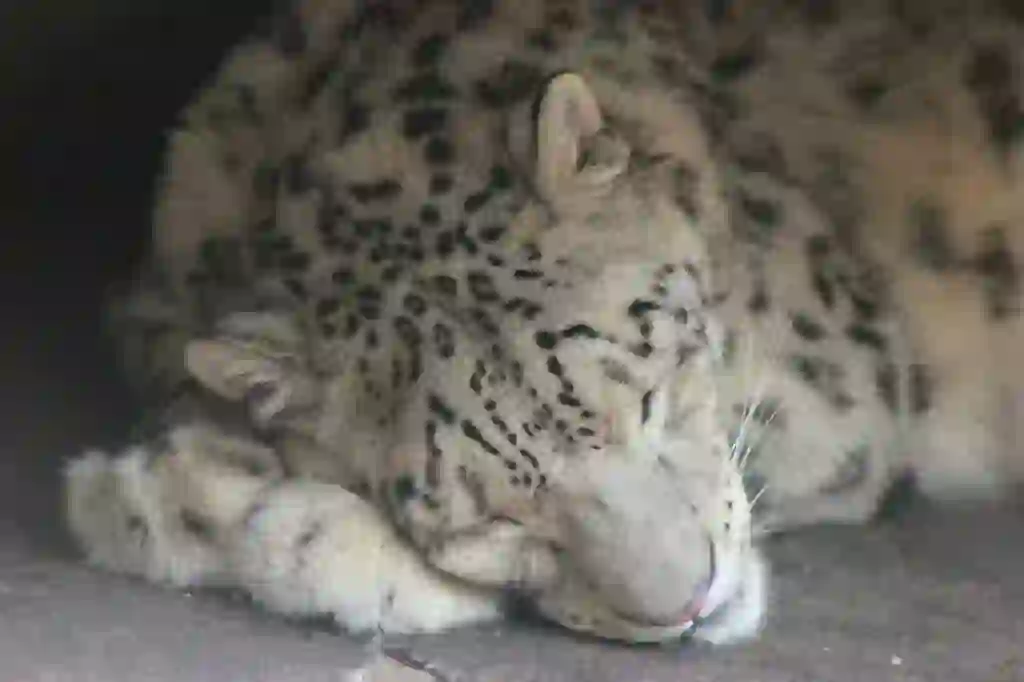
出典:https://pixabay.com/images/id-2665135/
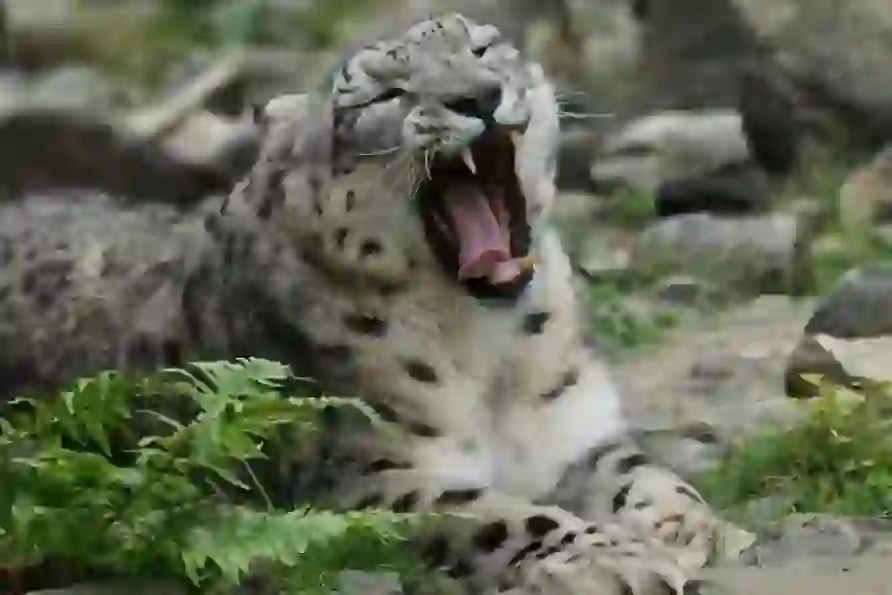
出典:https://pixabay.com/images/id-973244/

enemy
出典:https://pixabay.com/images/id-1972762/
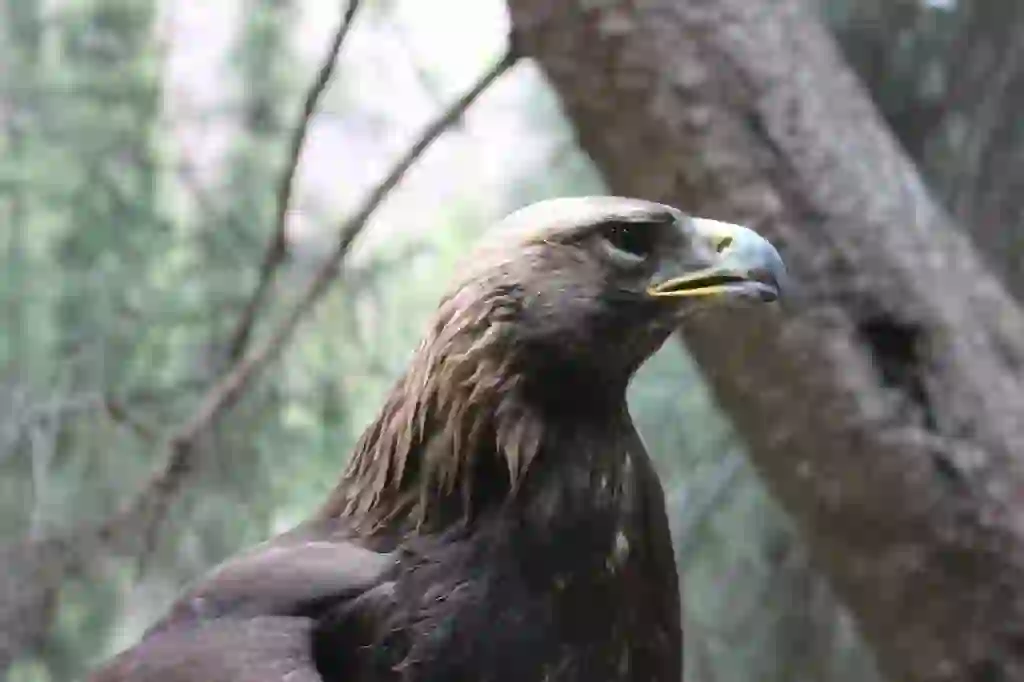
enemy
出典:https://pixabay.com/images/id-4266693/
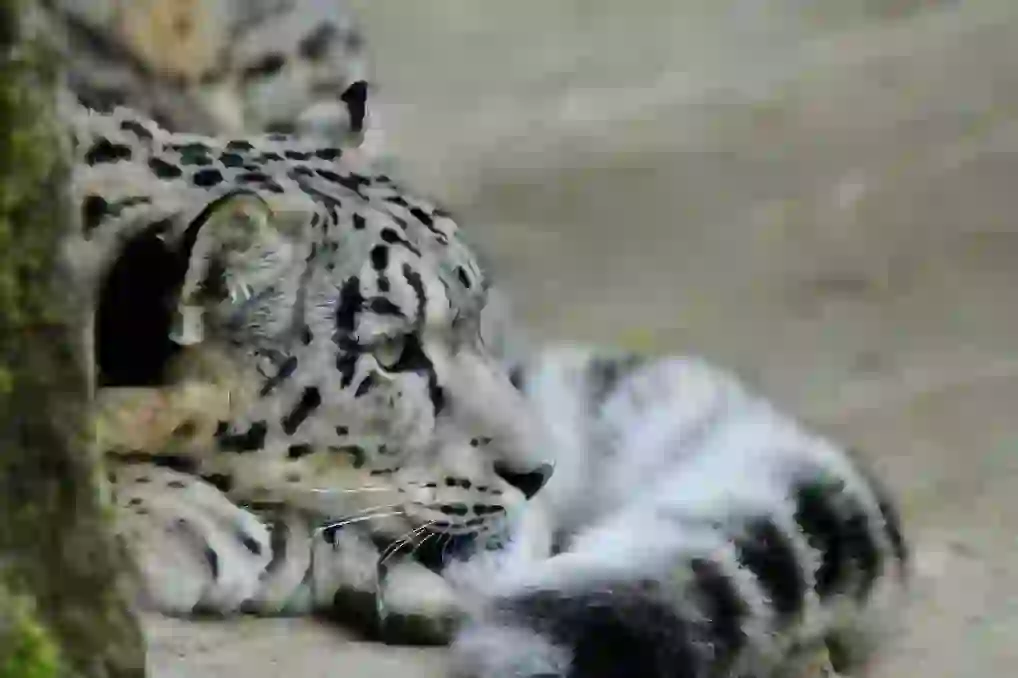
出典:https://pixabay.com/images/id-2518152/

Help Enrich Our Animalbook.jp with Your Media!
We are constantly looking to expand and enrich our Animalbook.jp with amazing photos and videos of animals. If you have any media that you'd like to share, please contribute and help us showcase the beauty and diversity of the animal kingdom. Your submissions will be credited and featured in our encyclopedia, reaching a wide audience of animal lovers.


















